The collaboration of Mr. Vanderbilt, Mr. Hunt and Mr. Olmsted surround the outer grounds of the Biltmore House. Mr. Hunt’s architectural designs in terraces, fountains and the construction of the wall garden and conservatory accent Mr. Olmsted expertise in the world of flora and landscape development.
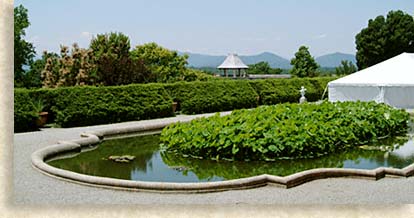 |
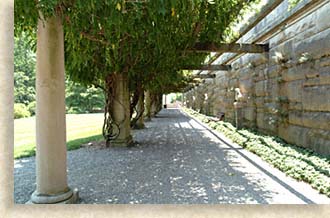 |
The Italian Garden is located on the southern border of the Front Lawn, also known as the Esplanade. Located nearby is the Pergola covered in a canopy of Wisteria and Trumpet Creeper as well as the Shrub Gardens with hundreds of woody plants. The Italian Garden includes three symmetrical pools, which were often used as splashing pools. This garden's original purpose was to be an area for recreation with a concealed door to the house located conveniently under an outer stairway. The tradition of the Italian Garden continues today with special concerts being held under a formal white tent, cast against a backdrop of the Blue Ridge Mountains and the beauty of the Biltmore House.
We now move into the enchanted world of nature, restoring that natural sense of beauty and order that sets peace in our hearts. As we enter the Walled Garden we found ourselves in a self-contained world of brilliant colors and fragrances. The Walled Garden is just below the House, purposely designed by Mr. Hunt as to not obstruct any views of the Estate. Mr. Olmsted thought this to be perfect for the English kitchen providing fruits and vegetables where as Mr. Vanderbilt saw the purpose for the garden as strictly beauty just as it is today. The Walled Garden encloses 4 acres with two arbors 236 feet long crossing at its center spine and surrounded by a vast variety of flowers. The Rose Garden consists of 2,300 roses, 250 modern varieties as well as a variety of roses grown for the Vanderbilt family, they were introduced between the years 1869 and 1875. These roses were brought to Biltmore Estate after its completion in 1895.
 |
The Conservatory is a beautifully awe striking structure in a popular Victorian Era style. Designed by Mr. Hunt, the glass, brick and stucco structure complements Biltmore Estate’s beauty and eloquence. The central room of the Conservatory is the Palm House containing a collection of palms and ferns along with other exotic plants. The lower level of the Conservatory is the Garden Place shop, which has plants and garden accessories available for purchase by guests visiting Biltmore Estate.
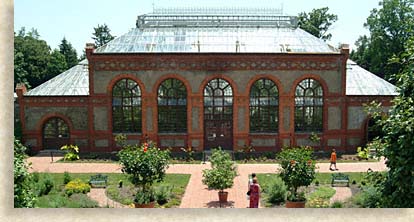 |
We say farewell to the genius of Mr. Hunt and move into the creative mind of famed landscape architect Frederick Law Olmsted. Trained in engineering and agriculture Olmsted is considered the founding father of American landscape architecture. Mr. Olmsted if you recall was the landscape genius that designed and oversaw the creation of the world famous Central Park in New York City. His works also include the U.S. Capitol grounds and he consulted in 1864 on the preservation of Yosemite Valley, one of America’s first national parks. Mr. Vanderbilt placed the remainder of Biltmore Estate in his competent hands.
Mr. Olmsted had the task of overseeing the 125,000 acres within the estate. Considering the rough terrain he had to work with, Mr. Olmsted created a more practical plan than Mr. Vanderbilt's original request and created a new plan for a 250-acre pleasure park adjacent to the House and gardens. Olmsted had to develop the Approach Road and miles of scenic carriage drives, numerous trails, as well as several lakes and ponds. He also had the responsibility of managing extensive forests, establishing farms along the French Broad River’s fertile bottomland and replanting the remainder of the property that was previously well-worn farmlands into a commercial timber forest to coincide with Mr. Vanderbilt’s goal of a self-sufficient enterprise.
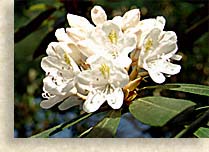 A
botanical garden best describes the artistic achievement of Mr.
Olmsted, whose designs accentuated the regal architecture of Biltmore
House. Olmsted created a world of natural beauty with a keen
sense of practical use for guests and visitors of Biltmore Estate.
A
botanical garden best describes the artistic achievement of Mr.
Olmsted, whose designs accentuated the regal architecture of Biltmore
House. Olmsted created a world of natural beauty with a keen
sense of practical use for guests and visitors of Biltmore Estate.
The Spring Garden, named for the two small springs that Olmsted diverted underground to flow into the 20-acre Azalea Garden. Mr. Olmsted referred to these two gardens as the Glen. With 14 native species, hybrids and a variety of other plants facing extinction in their natural habitat. Conservation was of great importance at Biltmore Estate.
From the gardens we travel into the parklands at Biltmore Estate. Deer Park was created as a scenic game preserve covering 250-acres of rolling-meadows and groves of oak, hickory, poplar, and beech trees. Hunting, fishing, hiking and wildlife observation were very poplar at Biltmore Estate, although today, hunting and fishing are no longer allowed.
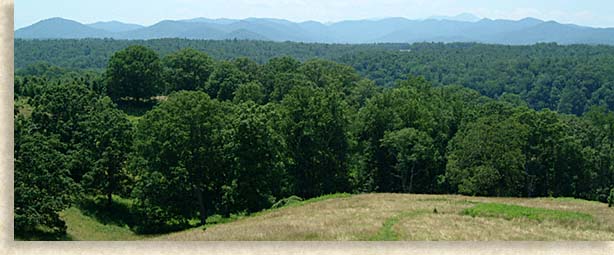
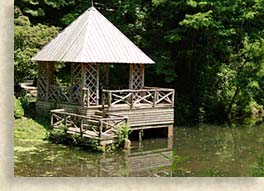 Mrs.
Highlander and I chose the Bass Pond trail for our tranquil hike. We
passed alongside the boathouse and noticed a couple resting in
its rustic confines, guests have used this quiet setting for generations. Large
Bass swim in the shady shallow along the shore of the pond while
others flip their tails causing an occasional splash of water. Across
the pond is a large red brick arched bridge that carries traffic
away from the Biltmore House.
Mrs.
Highlander and I chose the Bass Pond trail for our tranquil hike. We
passed alongside the boathouse and noticed a couple resting in
its rustic confines, guests have used this quiet setting for generations. Large
Bass swim in the shady shallow along the shore of the pond while
others flip their tails causing an occasional splash of water. Across
the pond is a large red brick arched bridge that carries traffic
away from the Biltmore House.
I’m reminded that this bridge was featured
in the big epic film “Last of the Mohicans” starring
Daniel Day Lewis and Madeleine Stowe, one of my all time favorite
films. This classic story took place in Hudson Valley, New
York, although the production was filmed in the Blue Ridge Mountains,
a great choice in my opinion. Several other scenes were shot
on the estate as well due to its isolated charm; I believe one
of the estate stables where also used.

We follow the edge of the pond until we arrive
at the footbridge that spans over a waterfall, we take a breath
and watch as it pours its white waters down into the rocky ravine
below. Mr. Olmsted, a gifted engineer also installed a flume system
at the pond for flood control in order to pipe debris-filled storm
water under the pond's bed. Finishing our trail loop
we head back to the Biltmore House parking lot and drive to the
estate’s Lagoon. During our hike back, we pass time with
a couple of other guest we met on the trail exchanging out personal
experience at Biltmore 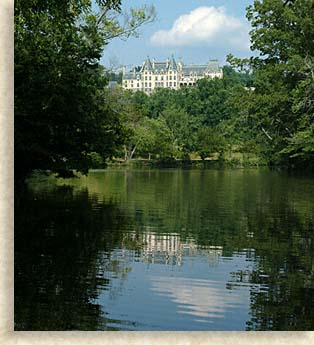 Estate.
Estate.
We drove along miles of paved roads on the estate grounds passing through groves, meadows and along the banks of the French Broad River. On the lower drive along the river we came to the Lagoon and took the road on the left that follows along its shores. The Lagoon like the upper Bass Pond were used for recreation by the guests of the estate. The road along the Lagoon travels between the riverbank and the lagoon;s shoreline. Looking over the tree lined body of water we see the great Biltmore House perched high upon a hill like a Medieval French Castle. The astounding beauty of this spot is the Biltmore House with blue skies, white clouds and the boarding parklands. If you stare into the crystal waters of the Lagoon you’ll see the wavering image of the castle as though it were a mirage, only looking up to the hill top does it all seem so real.
We complete the lagoon circle and are back on the main road, we continue along the river to the Winery and Farm Village. To get an old time feel for Biltmore Estate’s agriculture and farm heritage you can take a tour of the Historic Horse Barn located in the Farm Village. The skills and lives of the estate's employees are depicted here through educational exhibits along with antique farm equipment. On weekends, woodworkers and blacksmiths demonstrate 19th–century farm life.

Click to go to the Winery at Biltmore Estate...
![]()
Sign
up for the Blue Ridge Highlander Newsletter, Messages from the Mountains
to find out first about our new feature stories, road trips and special offers
Your e-mail addresses will not be sold or given away to anyone.
Privacy
Policy
Interested in your business being on the Highlander, click here...
Let our visitors tell you about the Highlander...
Click the feathers to go to the Highlander site
map...


